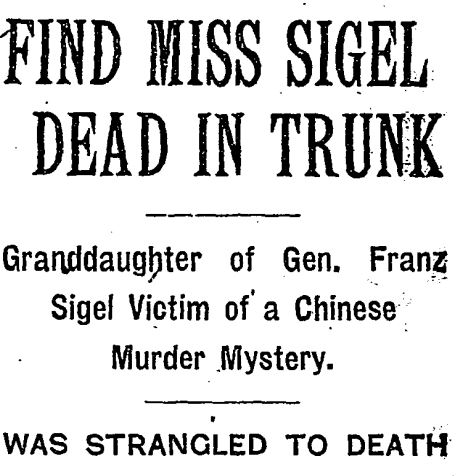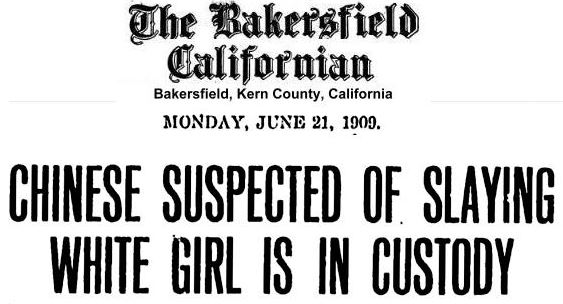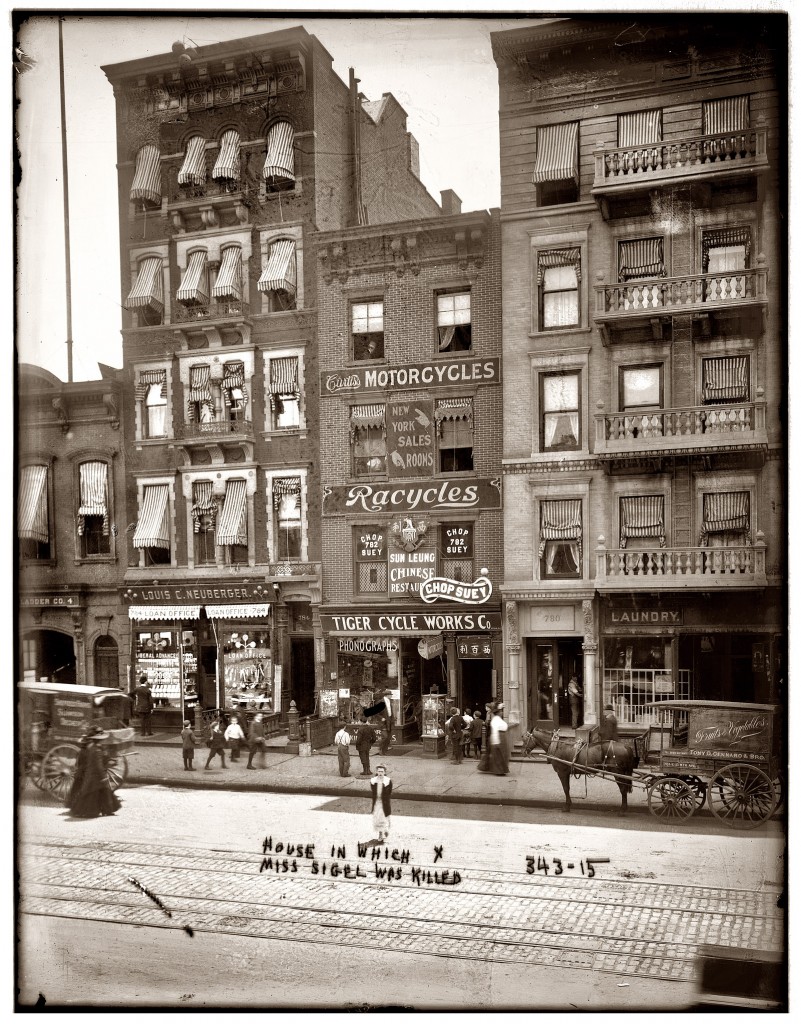Blog Archive
“Where Miss Sigel Met Her Slayer”
“A body which at 1:24 o’clock this morning was identified of that as Miss Elsie Sigel, daughter of Paul Sigel of 209 Wadsworth Avenue, Washington Heights, son of Gen. Franz Sigel of civil war fame, was found yesterday afternoon in a trunk on the top floor of 782 Eighth Avenue in apartments occupied by Chinamen. She had been strangled by a rope, which was found tightly wound around her neck.”
So began a New York Times article about the murder of a young girl on January 9th, 1909, and touched off a sensationalist murder investigation that revealed many deep-seated prejudices towards Asian immigrants and Asian Americans.
Elsie Sigel was a 19 year old girl who volunteered as a missionary at the Chinatown Rescue Settlement and Recreation Room, where she counselled young women who had turned to drugs and prostitution and attempted to spread Christianity to the city’s Asian population. Elise and her mother traveled to Chinese neighborhoods across the city to do her missionary work; at one of these restaurants on Amsterdam Avenue, she met Leon Ling, who sometimes went by “William” and lived above the Amsterdam Ave. restaurant which his cousin owned.
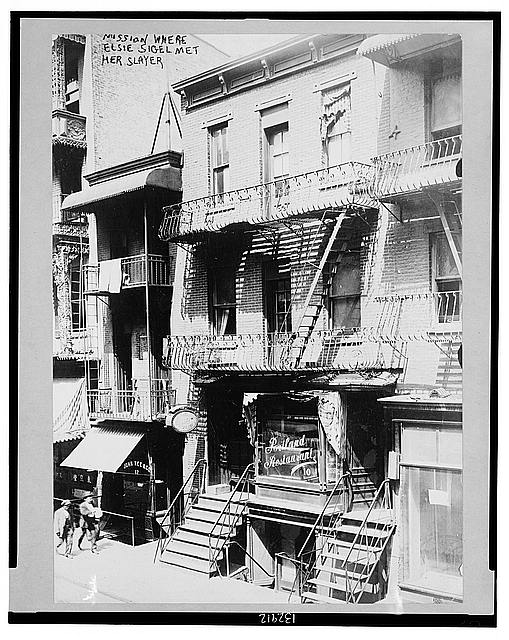
The Chinatown mission where Elsie and Ling became acquainted. Photo courtesy the Library of Congress.
In early January 1909, no one had heard from Elsie or Ling for days – when Ling’s cousin tried his apartment and noticed a foul odor coming from under the door, he immediately called the police, who discovered Elsie’s body in the trunk in Leon’s apartment.
The police also discovered over 30 love letters from Elsie to Leon, some of which sounded desperate. Leon was one of Elsie’s most passionate students in the mission – he often came to the Sigel home, and took Elise and her mother on trips to Chinatown. Eventually, Leon and Elsie began to go out without a chaperon and began a relationship.
As the cops continued to investigate Ling, they discovered another Chinese immigrant, Chu Gain, admitted to having a relationship with Elsie. Gain told the police that he had received anonymous letters threatening Elsie’s life if the two did not end their relationship. Because of this, the police suspected jealousy as the motive for the murder; they called it “love mania” and theorized that Ling had been the murderer. They arrested three men in relation to the murder.
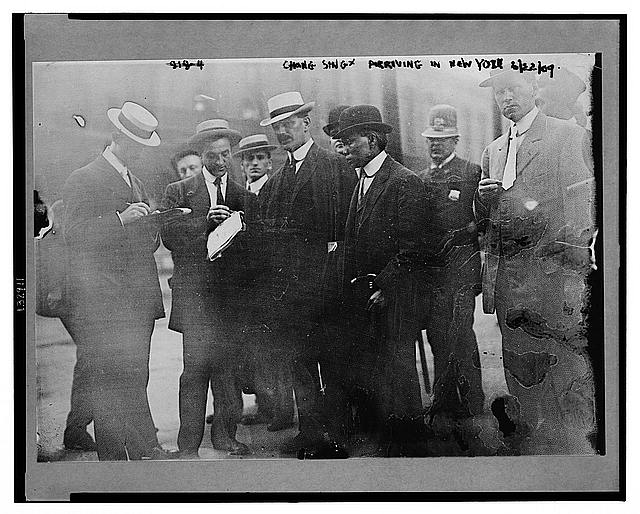
Chong (or Chang) Sing, who was implicated in the murder of Elsie Sigel, meets with police and reporters in 1909. Photo courtesy the Library of Congress.
The murder of a young upper-class white woman by a recent Chinese immigrant made headlines in New York (for over 2 years) and set off a wave of anti-Asian sentiment across the country. White New Yorkers were already terrified that Chinese immigrants were luring their children into opium dens and prostitution, and now that they had “evidence” that Chinese men were dangerous, they became even more irate.
This racial terror spread from New York. Ling had completely vanished from New York City, and a nation-wide manhunt for him began; all across the country, reports of Asian and Asian-American men, who didn’t resemble Ling at all, were arrested, harshly questioned, and released.
Wild theories flew around that Ling had fled back to China, that he and Elise had run off together and that the body in the trunk was used to throw off suspicion, or that Elsie had committed suicide and that the Chinese population had Ling smuggled out of the country to avoid prosecution.
In 1910, the Secret Service reported that Ling had been taken to Canada in the days before Elsie’s body was discovered, and that he eventually made his way to China, where he lived the rest of his life on a farm. Ling was never apprehended and the murder is still open, 105 years later.
The Elsie Sigel murder was just one, albeit very sensational, piece of the anti-Asian sentiments that were prevalent in American culture for hundreds of years. On June 4th, scholars Jack Tchen and Dylan Yeats will come to the Tenement Museum to discuss their new book, Yellow Peril!, which surveys a collection of anti-Asian images and writings which were intended to create paranoia and fear. Come explore a fascinating archive of paintings, photos, posters, comics and more that enforced racist ideas in Western culture.
More information about this Tenement Talk here.
– Posted by Lib Tietjen
